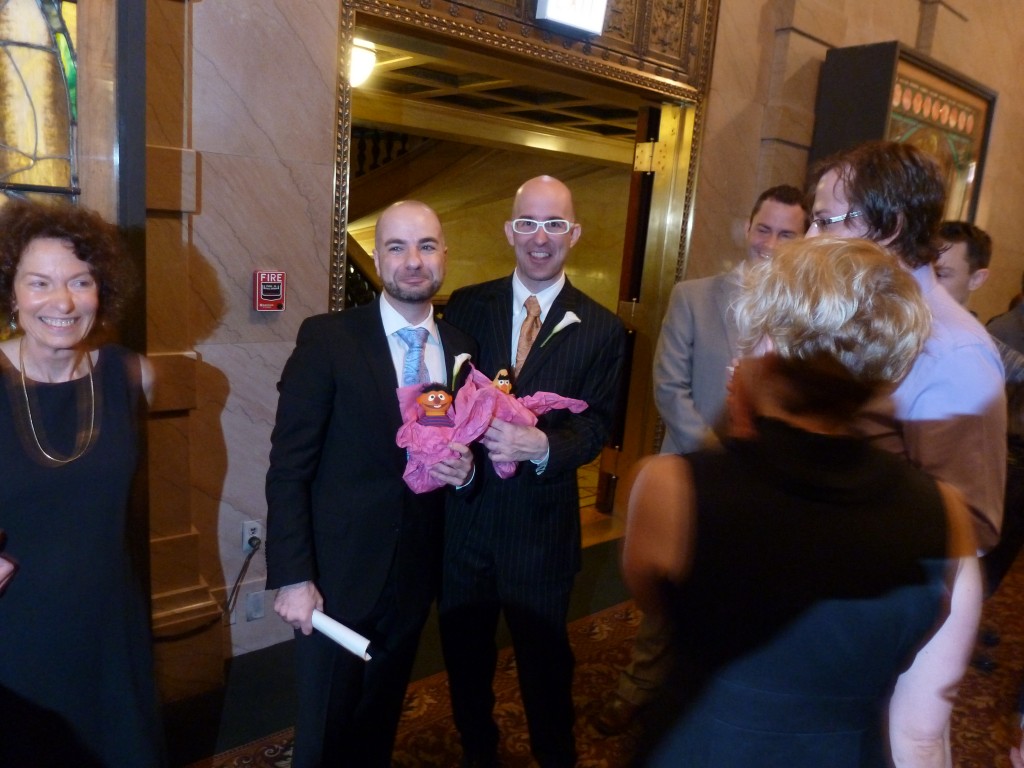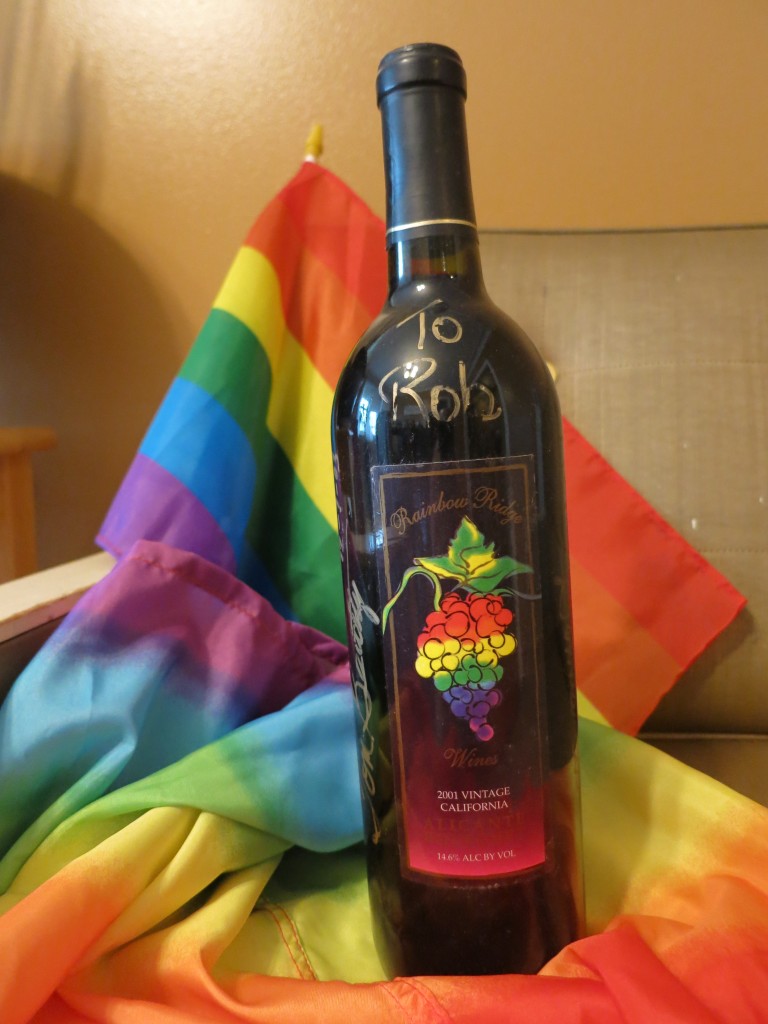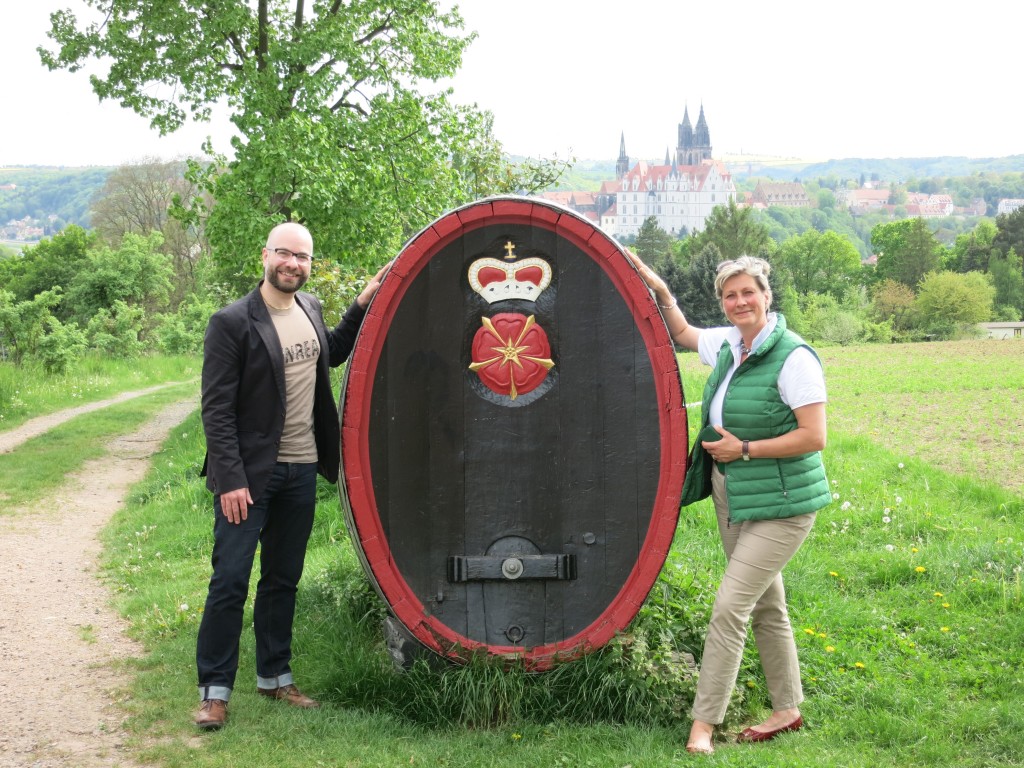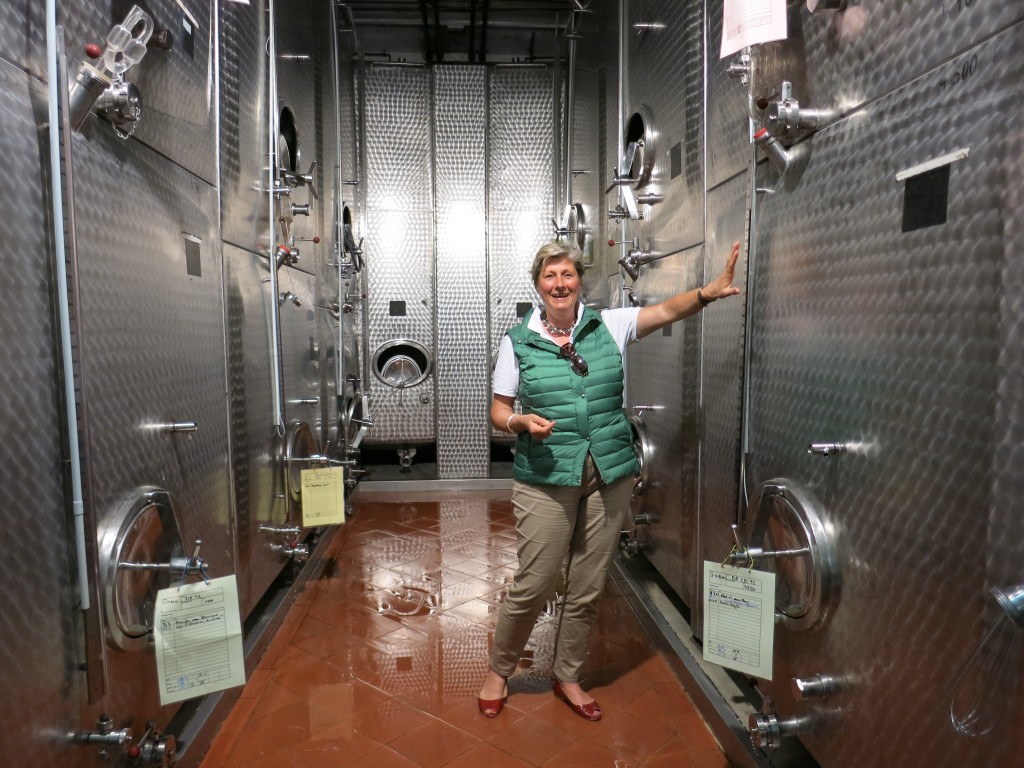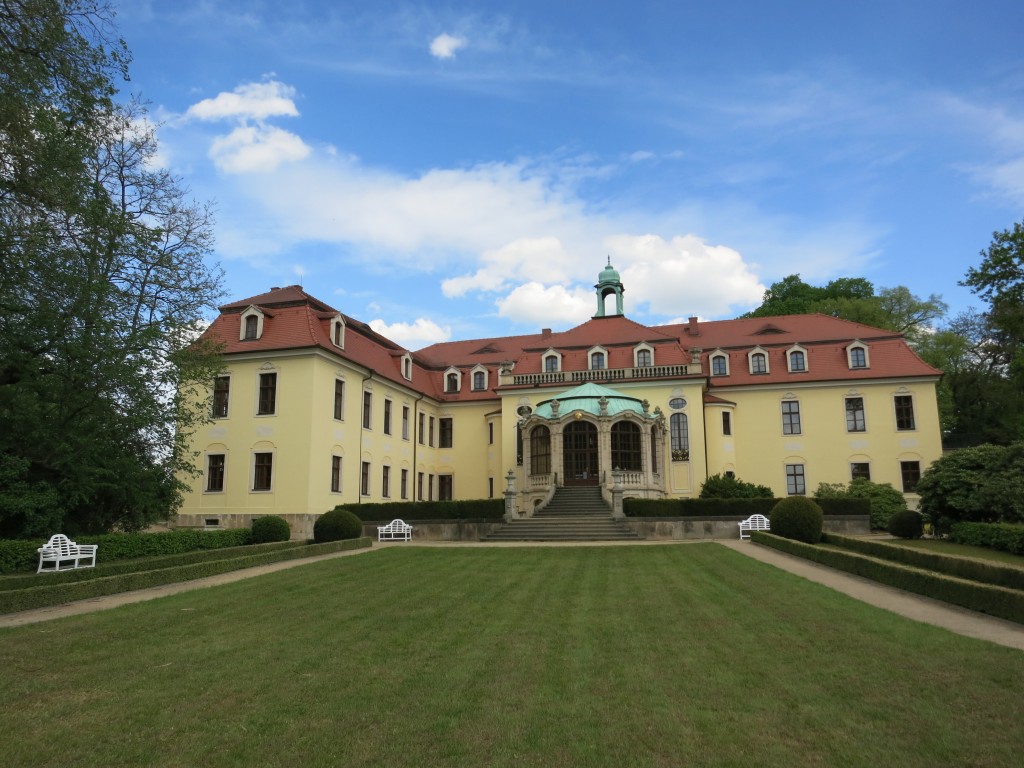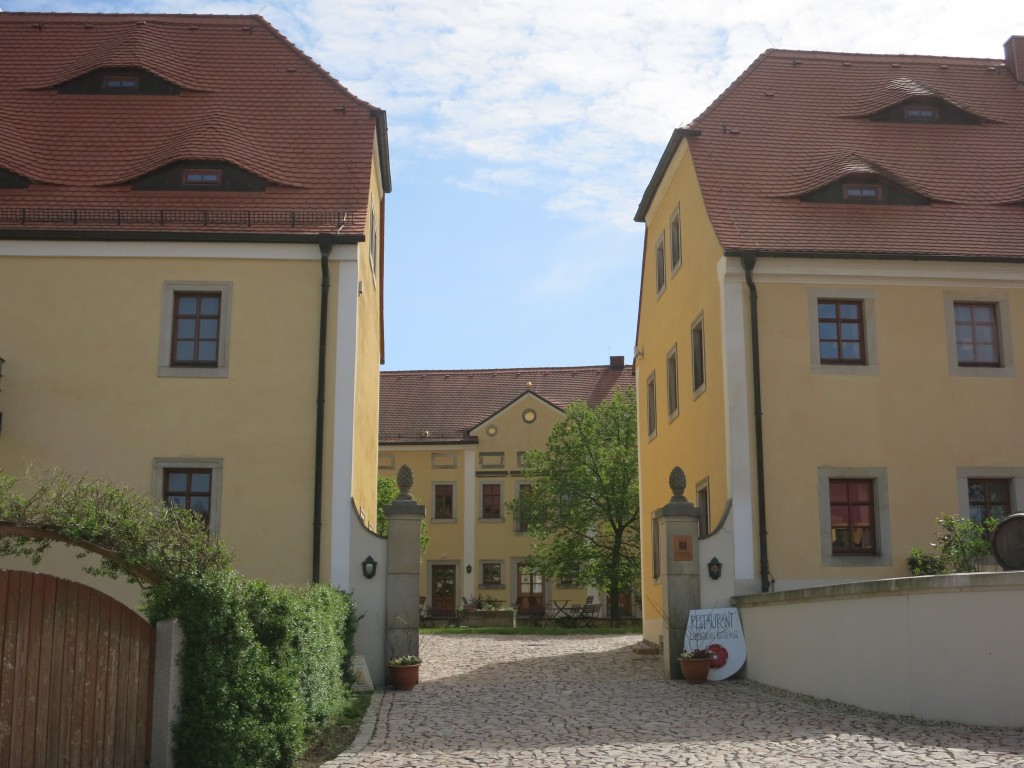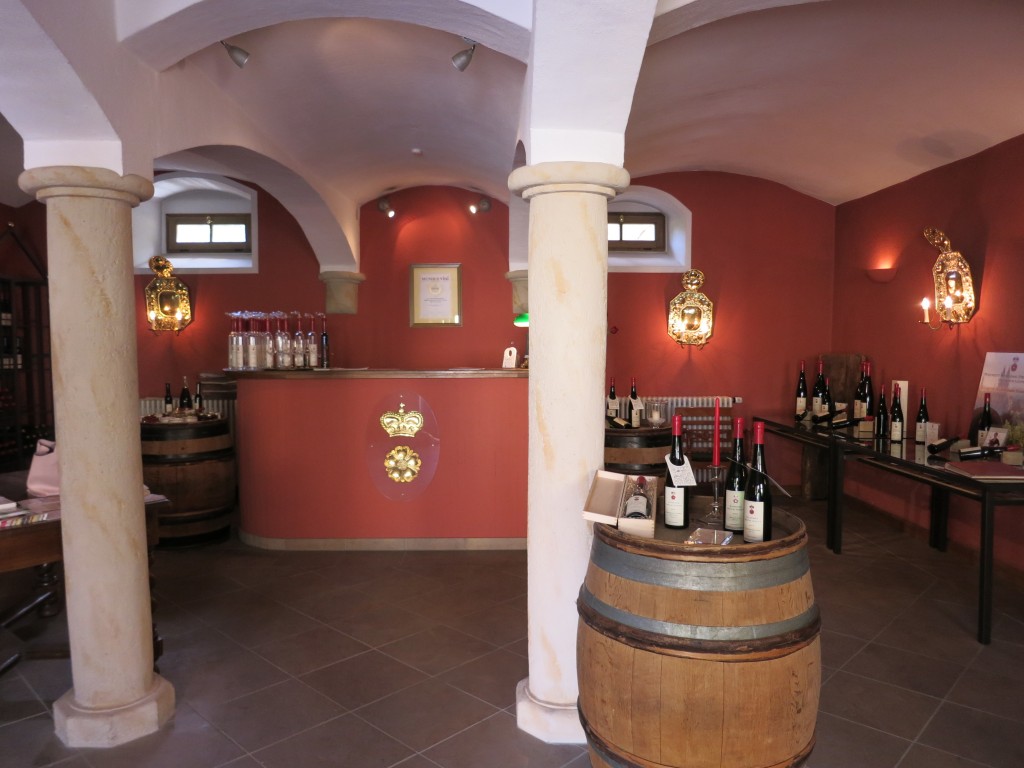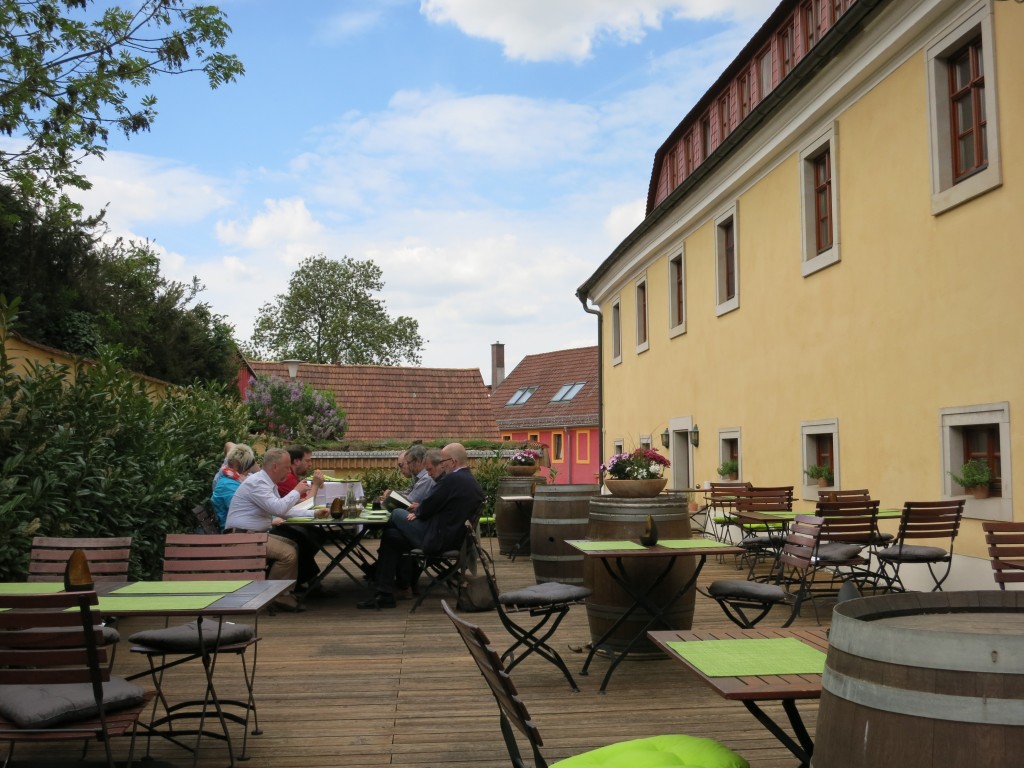Celebrating The SCOTUS Marriage Decision
It’s not every day that the Supreme Court hands down a ruling so fully and dramatically in support of human rights. This ruling striking down laws banning same-sex marriage is truly historic. It will change the lives of millions of people, who, in at least one respect, lived as second-class citizens of the United States.
That calls for a first-class celebration. I recommend heading straight to your city’s largest gay bar after work, where the mood will doubtless be more than usually festive. And what the heck, order a Cosmopolitan. Yes, it’s terribly dated, but it’s about as gay as cocktails get, and it remains as delicious as ever when properly made: decent vodka, triple sec or Grand Marnier, cranberry juice and fresh lime — not Rose’s or sour mix.
If you prefer to have a party rather than going to a bar — and let’s face it, that’s exactly what most of us married folk prefer — it’s time to pull out all the stops.
PARTY #1: FRUGAL BUT FABULOUS
–Aperitif: Campari and club soda, served in a highball and garnished with lime. It’s refreshing, it’s pink, and you only need to add a little Campari to each glass, making it inexpensive to mix a lot of these. If you aren’t expecting a mob, opt for a slightly more complicated Gaspare: 4 parts club soda, 1/2 part fresh-squeezed lime juice (do not use bottled), 1/4 part simple syrup (1 part sugar dissolved in 1 part water), 1 part Campari.
–First Course: Evolúció Furmint. Chicago’s biggest wine shop, Binny’s, sells this exotic Hungarian wine for just $9 a bottle, and you get a lot of flavor bang for your buck. If you can’t find it, consider instead a Torrontés from Argentina, ideally from around Salta. Typically bright with tropical fruit and flowers but still very dry, a good Torrontés can be had for $10 or $12 per bottle.
–Second Course: A Portuguese red blend. Red wines from Portugal tend to be excellent values because most of us can’t even pronounce the indigenous grape varieties, let alone tell you what they taste like. Furthermore, Portugal tends to be overshadowed by its much more famous neighbor, the land of Rioja and Cava. It shouldn’t be too difficult to find a ripely fruity and dry Portuguese red for around $10 or $12. Be sure to serve your red wine at cellar temperature — put it in the fridge for a little while if necessary.
–Dessert: Death’s Door Wondermint. This spirit is essentially a peppermint schnapps, but it tastes much more elegant and complex than you might expect because of ingredients such as rose water and bitter almond. It costs around $23 a bottle, but because it’s strong, a little goes a long way. Chill well, and serve in a cordial glass with a chocolate dessert or vanilla ice cream.
PARTY #2: MID-RANGE BUT NOT MEDIOCRE
–Aperitif: Kir Royale. This simple French drink never fails to start a party off right. Traditionally a Kir Royale has a base of Crémant de Bourgogne, but any good dry sparkling wine will do. A decent Prosecco or a quality Cava would work quite well. Add sparkling wine to a flute and top up with a dash of Crème de Cassis, a blackcurrant liqueur.
–First Course: A single-vineyard Riesling from the Pfalz or the Mosel Valley (Mosels tend to be easier to find). You can expect rich fruit matched by lively acids and steely nerve, and all for around $25 to $30. Another delightful alternative would be Savennières from the Loire. Sancerre gets all the attention, which means Savennières tends to be a value for the money. You should be able to find one for about $25.
–Second Course: Something innovative would seem to be in order here. Perhaps a powerful Syrah from Chile. No longer dedicated just to the cheap stuff, Chile has ideal terroir for fine wine, the full potential of which vintners are now truly beginning to exploit. Single-vineyard wines are becoming more and more common here, as well as in neighboring Argentina. A high-quality Austrian St. Laurent would be a delicious alternative, if you can find one.
–Dessert: Ron Zacapa Centenario Sistema Solera 23. This beautiful rum from Guatemala contains spirits ranging in age from six to 23 years. It tastes wonderfully smooth and rich, and it’s a perfect way to end a meal. Zacapa recommends serving it with a single large lump of ice, which I prefer in the summer. But it works equally well neat, should your guests prefer it that way. You should be able to find it for around $50 to $60 a bottle.
PARTY #3: DAMN THE TORPEDOES
–Aperitif: Time for Champagne with a capital “C”. Go for a Grower Champagne, produced by the people who grew the grapes (most Champagnes blend grapes from across the region). You can identify a Grower by the letters “RM,” usually written in the tiniest font possible on the label, as opposed to “NM”, the designation on most other Champagnes.
–First Course: The obvious choice would be white Burgundy, and I certainly won’t argue if you want to pour me a glass. For something a little more unusual, opt instead for a white Pessac-Léognan from Bordeaux, redolent of lush tropical fruit. Or a Grosses Gewächs (Great Growth) Riesling would also surely impress the fussiest of guests.
–Second Course: A Bordeaux winemaker once told me that he doesn’t spend more than €100 (about $115) on a bottle of wine, because anything more is just for show. Keeping that advice in mind, I’d recommend a Brunello di Montalcino (Poggione makes some exquisite ones), or Las Terrazas de los Andes “Cheval des Andes,” a wine that gave me chills when I recently tried it in Mendoza.
–Dessert: My favorite dessert wines in the world are Tokaji Aszú from Hungary and Sauternes from France. Both use grapes affected by Noble Rot, making them rich, vibrant and expensive. Nevertheless, the flavor-to-price ratio in each case is quite high. If you prefer a spirit, choose one of these Cognacs that brought me to tears.
As for me, tonight might be the night to open my treasured signed bottle of 2001 Rainbow Ridge Alicante Bouschet, the gayest wine in my rack. I have a feeling that after a long period of waiting, tonight it will be at its very best.

